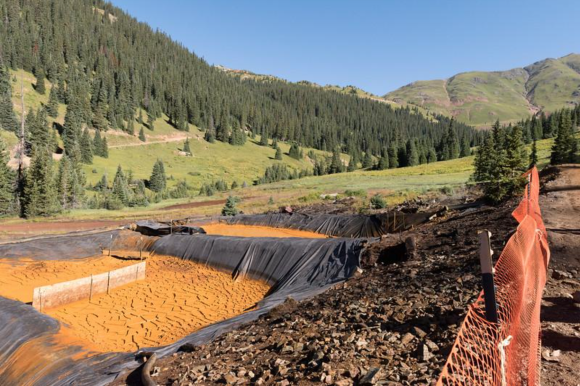On Aug. 5, 2015 an environmental contractor acting under the EPA’s authority breached a bulkhead at the entrance to the Gold King Mine in Southwestern Colorado. As a result, 3 million gallons of heavy metal laced water surged into Cement Creek before reaching the Animas River and eventually contaminating adjoining waterways in Utah and New Mexico.
This incident has sparked a conversation about the legacy of mining in the West and the significant risk that existing conditions pose for both public health and the economy. According to the EPA, 40 percent of the headwaters of western watersheds have already experienced some level of contamination as a result of the 500,000 abandoned and unreclaimed mines that dot the U.S.
Mining operations on public lands continue to be regulated under the General Mining Act of 1872, which does not require that mining companies pay royalties thatcould be used to offset costs of cleanup. These regulations have kept mining companies from being held responsible for the costs associated with fully reclaiming and remediating their sites.
There are limited federal and state funds available to cover mitigation. This shifts responsibility to taxpayers and those immediately impacted by resulting pollution conditions. The EPA has assumed full liability in the case of the Gold King Mine release, however, if the breach had occurred spontaneously and not under the EPA’s watch, more of the economic impact could have fallen on the property and business owners.
Addressing Legacy Mining Risk
Insurance options are available to address the risk created by legacy mining issues and to cover operations involved in remediation efforts. Most standard insurance policies include an absolute pollution exclusion that would prevent the carrier from responding to property damage or bodily injury caused by heavy metal contamination and other pollutants. However, the environmental insurance marketplace has developed specialty options designed to respond.
Site pollution liability insurance, also known as premises pollution, environmental impairment liability (EIL), and pollution legal liability (PLL), is designed to cover claims arising from pollution releases at, on, or emanating from a specific scheduled location. A “location” can be as broad as an entire piece of property or as narrow as a specified storage tank.
Abandoned or unreclaimed mining sites are not typically eligible for this coverage. EIL coverage can be obtained for operations that are downstream from legacy mining sites that could face contamination resulting from toxic upstream conditions. Property owners, manufacturers, agricultural operations, and other businesses that are located in or near contaminated watersheds should consider this coverage. These policies can also include business income or loss of use provisions which respond when a commercial operation is forced to halt operations as the result of contamination.
Contractors pollution liability (CPL) is coverage designed to protect from third party claims for damages caused by “pollution conditions” arising from the insured’s covered operations. This coverage is a vital component of the insurance program for any contractor involved in reclamation and remediation activities at mining sites. Environmental contractors and consultants can cause significant damage through their reclamation efforts. CPL coverage can respond to pollution conditions created by both current and completed operations.
Professional Liability
Professional liability can be obtained on a monoline basis or as part of a package with CPL. Any insured involved in the design and implementation of mitigation and remediation or assessing the level of contamination at abandoned or unreclaimed mine sites should carry this coverage.
The Gold King spill has also highlighted efforts by well-meaning third party organizations who wish to launch smaller scale reclamation efforts independently. Typically these organizations are required to assume full liability for any pollution caused by their activities which creates the need for CPL and professional liability coverage.
Topics Contractors Pollution
Was this article valuable?
Here are more articles you may enjoy.



 USAA to Lay Off 220 Employees
USAA to Lay Off 220 Employees  North Carolina Adjuster and Son Charged With Embezzlement in Roof Jobs
North Carolina Adjuster and Son Charged With Embezzlement in Roof Jobs  Former Congressman Charged After Collision with State Trooper in Florida
Former Congressman Charged After Collision with State Trooper in Florida  Cargo Owners in Baltimore Disaster Face ‘General Average’ Loss Sharing, MSC Says
Cargo Owners in Baltimore Disaster Face ‘General Average’ Loss Sharing, MSC Says 


